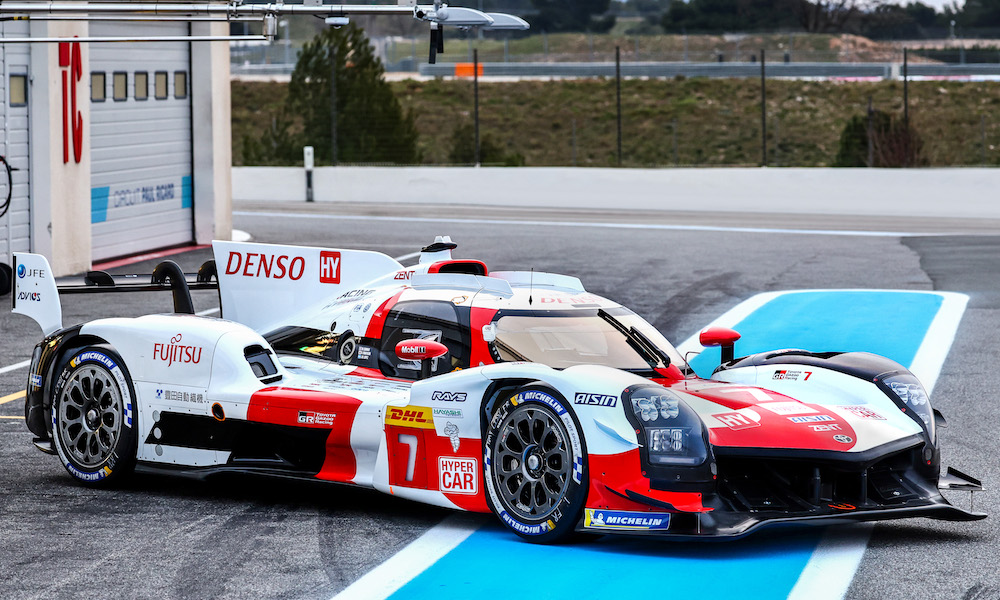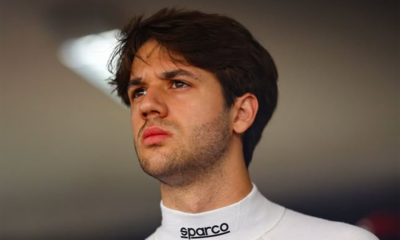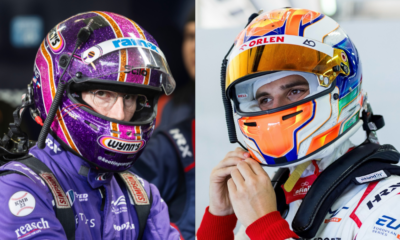Toyota has presented an updated version of its GR010 Hybrid LMH car that the Japanese manufacturer will deploy for its FIA World Endurance Championship title defense this year.
As reported in November, Toyota Gazoo Racing has made some technical tweaks ahead of the 2023 season, when it will face increased factory opposition in the Hypercar class.
Toyota has made adjustments to the GR010 Hybrid’s powertrain, including the 3.5-liter V6 twin-turbo engine, to reduce weight and improve reliability.
According to Toyota, the car was put on a “weight saving program” bringing it closer to the 1040 kg minimum weight, after previously running heavier because of its design to the original LMH regulations which stood at 1100 kg until convergence with LMDh.
Aerodynamic changes to the car include dive planes added to the front corners and a smaller rear wing end plate. New vents have been added to the front and rear to improve brake cooling, and a revised headlight configuration has been introduced.
LMH manufacturers are only permitted to make updates for performance reasons by utilizing up to five ‘Evo joker’ tokens during the car’s five-year homologation period, although Toyota is not saying how many jokers it has used for its 2023 revisions.
“We have made evolutions to our car to further improve reliability, drivability and serviceability, part of our normal long-term plan for continuous improvement,” said Toyota Gazoo Racing WEC technical director Pascal Vasselon.
“We implemented a big evolution for 2022 with the change of wheel size, which was necessary to address some issues we were suffering from, and it delivered the benefits we expected.
“The modifications we have made for 2023 are the normal next step in this process, and we have seen encouraging results in pre-season testing.”
Toyota recently conducted a three-day test at Paul Ricard, where the car ran with its updates in place. It also undertook an overnight endurance run during the session.
“Just like last year, we have introduced some evolutions to our GR010 Hybrid for the 2023 season,” said team principal and driver Kamui Kobayashi.
“These updates are the result of strong cooperation between team members in Higashi-Fuji and Cologne, as well as our partners and suppliers, so I would like to thank everyone for their hard work so far.
“The drivers’ first impressions of the revised car from the roll-out and our pre-season tests are positive, which gives us confidence that together we can fight to retain our Le Mans and WEC titles.”
Toyota has won the last four WEC titles and the last five editions of the 24 Hours of Le Mans, but is now set to encounter fresh competition from the likes of Ferrari, Porsche, Cadillac and Peugeot, which entered three races last year ahead of its first full season.
“It is exciting to compete against new entrants in Hypercar this year, particularly for the fans, but our approach doesn’t change,” Vasselon stated.
“The job remains the same; we aim to win, so we must get the maximum out of our package, without mistakes. That is how we always approach racing.
“Reliability and global pace consistency, as well as the reduction of accident risks, are critical factors which we have continued to focus on with the updated GR010 Hybrid and our approach to the 2023 season.”
As announced in November, Toyota will continue with an unchanged lineup, although Kazuki Nakajima has been brought in as the test and reserve driver.
Kobayashi will share the No. 7 Toyota with Mike Conway and Jose Maria Lopez, while reigning world champions Sebastien Buemi, Brendon Hartley and Ryo Hirakawa continue in the No. 8.






















